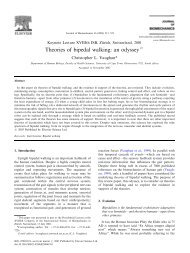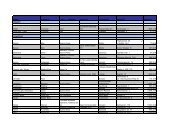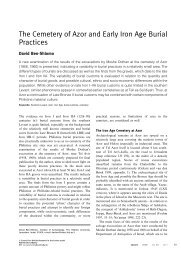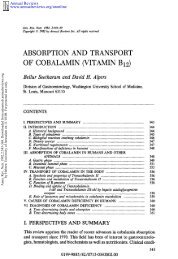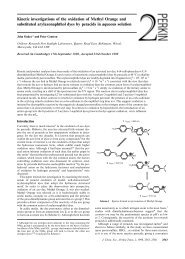The Riddle of Ramat Raḥel: The Archaeology of a Royal Persian ...
The Riddle of Ramat Raḥel: The Archaeology of a Royal Persian ...
The Riddle of Ramat Raḥel: The Archaeology of a Royal Persian ...
You also want an ePaper? Increase the reach of your titles
YUMPU automatically turns print PDFs into web optimized ePapers that Google loves.
3including lmlk and “private” stamp impressions (late 8th and early 7th centuries BCE, and seeLipschits, Sergi and Koch 2010); concentric circle incisions (mid-7th century BCE, and seeLipschits, Sergi and Koch 2011: 7-8), and rosette stamp impressions (late 7th–early 6th centuriesBCE, and see Koch and Lipschits 2010). In the Babylonian, <strong>Persian</strong> and Hellenistic periods <strong>Ramat</strong><strong>Raḥel</strong> was the main center <strong>of</strong> stamped jar handles, with about 77 lion stamped handles dated to the6th century BCE (Lipschits 2010), more than 300 yhwd stamp impressions dated to the late 6th tomid–2nd centuries BCE (Vanderho<strong>of</strong>t and Lipschits 2007; Lipschits and Vanderho<strong>of</strong>t 2011), and33 yršlm stamp impressions dated to the 2nd century BCE (Bocher and Lipschits 2011). All in all,the phenomenon <strong>of</strong> stamped jar handles collected and stored in <strong>Ramat</strong> <strong>Raḥel</strong> continued for morethan half a millennium <strong>of</strong> constant, systemized administrative system.However, until the excavations <strong>of</strong> the renewed project <strong>of</strong> the <strong>Ramat</strong> <strong>Raḥel</strong> expedition began,no architectural remains from this period had been discovered; the abundant stamped jar handlesand other artifacts from the <strong>Persian</strong> period were out <strong>of</strong> context with any architectural finds. Thiswas the <strong>Persian</strong> period "<strong>Riddle</strong> <strong>of</strong> <strong>Ramat</strong> <strong>Raḥel</strong>."<strong>The</strong> renewed excavations at <strong>Ramat</strong> <strong>Raḥel</strong> (Lipschits et.al. 2011) and the final publication <strong>of</strong>the architecture and finds from Aharoni's excavations (Lipschits and Gadot forthcoming), made itpossible to reevaluate the archaeology <strong>of</strong> the site and its significance vis-a-vis the political history<strong>of</strong> Judah as a province in the Achaemenid empire. In this paper we present the architecture and allthe associated finds from the <strong>Persian</strong> period (5th-3rd century BCE), as excavated at <strong>Ramat</strong> <strong>Raḥel</strong>.Our research demonstrates how <strong>Ramat</strong> <strong>Raḥel</strong> reached its zenith during the <strong>Persian</strong> period, servingas an imperial administrative center, and as suggested here, also as the residence and palace <strong>of</strong> thegovernor <strong>of</strong> the province. <strong>The</strong> site declined towards the end <strong>of</strong> the <strong>Persian</strong> period, only to regainfor a short period some importance toward the second part <strong>of</strong> the Hellenistic period.<strong>Ramat</strong> <strong>Raḥel</strong> – <strong>The</strong> Site and Its Location<strong>The</strong> ancient tell <strong>of</strong> <strong>Ramat</strong> <strong>Raḥel</strong> is located on a prominent summit, 818 m above sea level, halfway between Jerusalem and Bethlehem (4 km from each). It is one <strong>of</strong> the highest peaks in the areasouth <strong>of</strong> Jerusalem, an ideal location for a fortress and watchtower, in direct control <strong>of</strong> the road thatleads to Jerusalem from the south (from Beersheba, through Hebron and Bethlehem), as well as <strong>of</strong>the road leading to Jerusalem from Beth-Shemesh in the west, through the Rephaim Valley. Thislocation <strong>of</strong>fers a superb view to the north (Mount Zion and modern-day western Jerusalem), to thewest (the Rephaim Valley), and to the south (Mount Giloh, Bethlehem and the northern Judean



